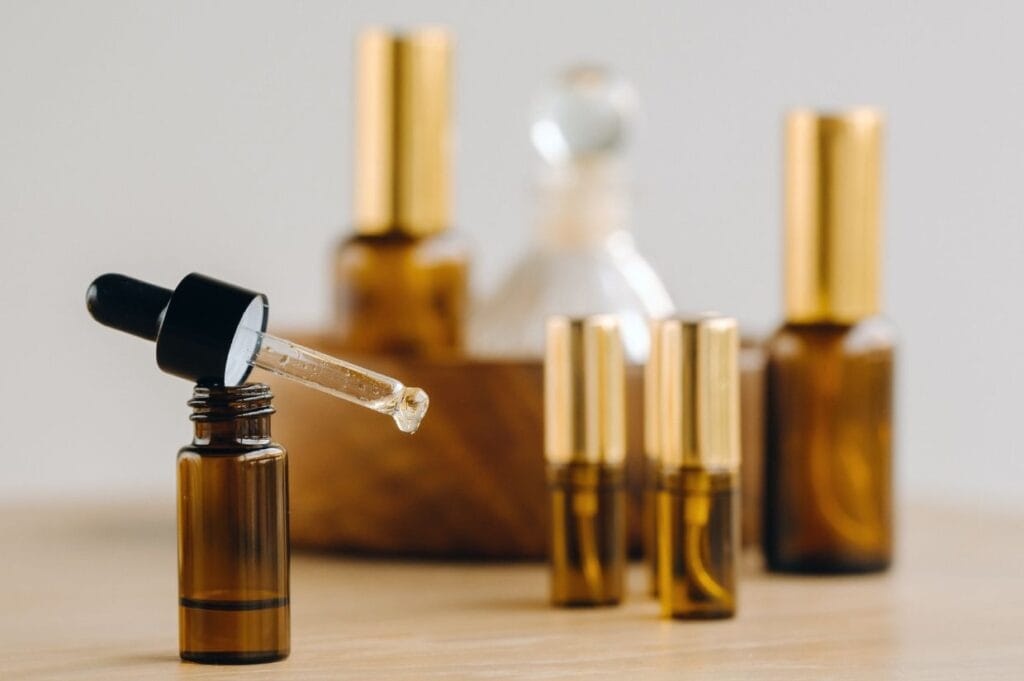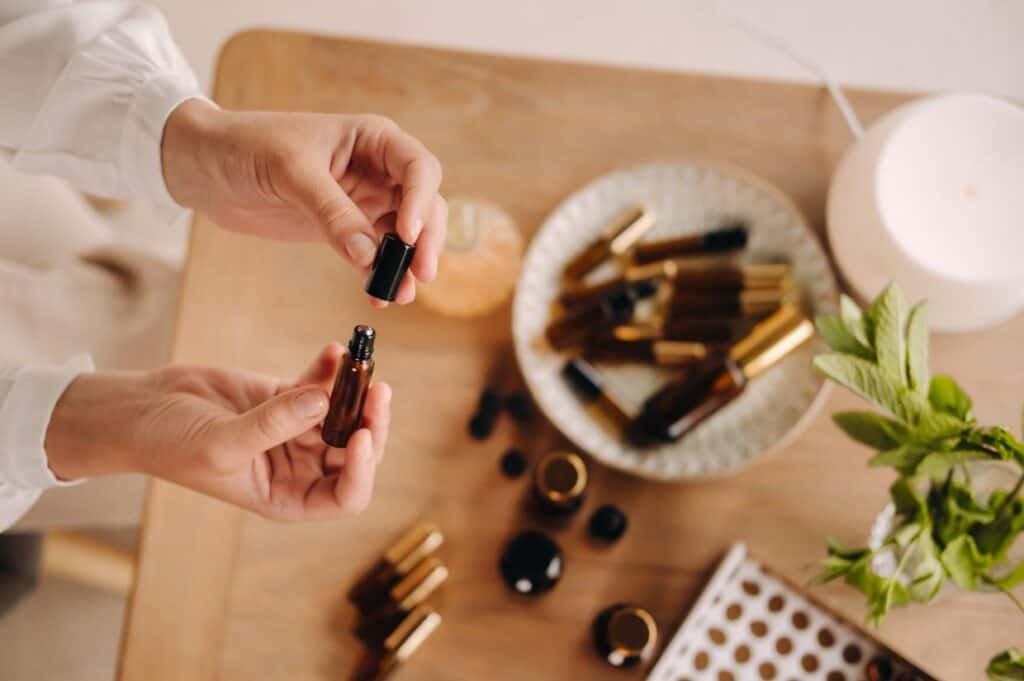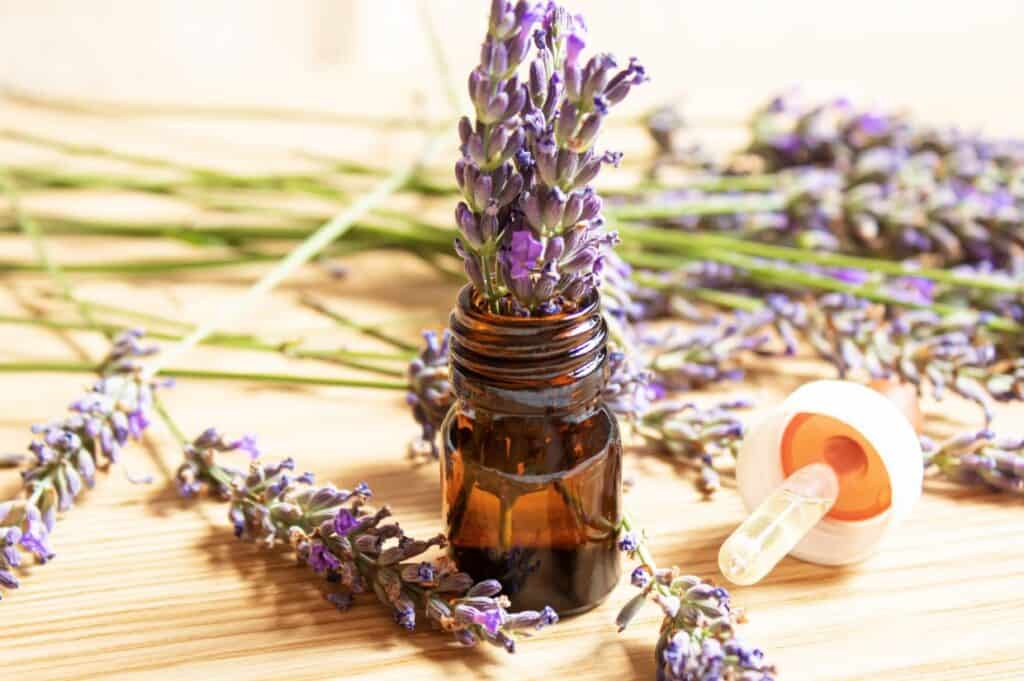Are you ready to start a fragrant journey to better well-being? Follow this beginner’s guide to common aromatherapy essential oils and dive into the fascinating world of aromatic expression.

Aromatherapy 101
Aromatherapy uses aromatic plant extracts and essential oils for various therapeutic purposes, namely to promote health and well-being. It is considered a form of alternative medicine and a complementary therapy practiced worldwide.
Sometimes, this practice is called essential oil therapy because essential oils are a prominent feature. Oils are applied to the skin or used on the olfactory senses through direct or steam inhalation.
Treatments may include the following:
- Diffusers.
- Inhalers.
- Massages.
- Facial steams.
- Aroma pendants.
- Aromatic spritzers.
- Body creams.
You don’t always need to go to a clinic, salon or spa to get the benefits of aromatherapy. You can enjoy many safe options at home for a fraction of the price.
If you love spending time outside near a flower or herb garden, you will surely be pleased about bringing fresh scents inside, too.
However you decide to engage with aromatherapy, remember to consult with your trusted medical health practitioner first and cooperate with their advice.

How to use essential oils for aromatherapy
Harness the benefits of aromatherapy with three basic application methods. Depending on your needs, one approach may be more suitable than the others.
Diffusion
Diffusing disperses aromatherapy benefits throughout a single space.
You can use a spritz bottle or any type of essential oil diffuser on the market. The main categories of diffusers are ultrasonic, nebulizing and evaporative. Each has pros and cons, so explore the options and find the best one for you.
“As a seasonal allergy sufferer, I love diffusing lavender, lemon and peppermint in the spring and fall when pollens kick up. Keeping my bedroom windows closed and using this blend helps tremendously with getting a good night’s sleep.”
— Gina Matsoukas, Running to the Kitchen
Direct or steam inhalation
Place a few drops of essential oil on a handkerchief or an aroma pendant, bring the material directly in front of your nose and mouth, cup the space with your hands and take a few deep breaths.
Alternatively, add a few drops of essential oil to a bowl of hot water. Lean over the bowl with a towel draped over your head to trap the steam. Take a few deep breaths in this position.
Topical application
Start with a carrier oil like olive or sweet almond oil and dilute a few drops of essential oil into it. Then, apply topically to the skin.
Essential oils often enhance massage oils. Skin creams and lotions can also have aromatherapy benefits from essential oils.
Roll-on blends are another type of application. Like spray perfume, small roller bottles, usually containing 5 or 10 milliliters of diluted oil, are applied on the inside wrist, nape of the neck, temples or above the collar bone.
Topical roll-on bottles are easy to personalize to your preferences and needs. They are also very portable, compact, and travel well.

Top seven best essential oils for personal use
Opening a catalog of essential oils and seeing over a hundred options with a wide range of price points, from affordable to jaw-droppingly expensive, is an overwhelming experience for beginners, so much so that it might turn you off from learning about essential oils at all.
Skip that stress and start with these tried-and-true, all-around best aromatherapy essential oils. Studies have shown that these may potentially impact well-being and stress-related disorders positively.
The choices here are easy to find at local health food stores and online. You can use them in a variety of applications. Furthermore, the seven options below are generally budget-friendly and won’t break the bank.
Lavender oil
Known best as a relaxing oil, lavender is excellent for evening use before going to bed. It’s a classic ingredient in salt scrubs, body lotions, soap and massage oils.
Diffuse the floral scent after a long day, add lavender-infused bath confetti, and take a soak in the tub to unwind.
Peppermint oil
With a fresh and invigorating aroma, peppermint oil is an enlivening oil for any aromatherapy use.
It’s a star in this essential oil recipe for pain and inflammation for whenever you want to add a minty, fresh accent to your day.
Ylang ylang oil
Exquisitely exotic and floral, ylang ylang is a unique scent. Prized for its uplifting effects, beginners can use this oil in steam inhalations or massage. It’s also a romantic scent, perfect for roll-on applications.
Eucalyptus oil
Have you ever gone to a steam sauna with young eucalyptus leaves next to the vents? Inhaling the vapors is commonly employed for easing congestion and promoting respiratory health. You can set up a steam inhalation and take a shortcut at home.
Lemon oil
Lemon oil, like the lemon fruit itself, has a bright and energetic smell that is sure to make you think of sunny summer days. Add it to your diffuser to enhance a lively atmosphere or to a DIY cleaning spray and wipe away the dullness that might come with household chores.
Rosemary oil
Similar to lemon oil, rosemary oil also has a functional place in soap and many household cleaners. You can receive aromatherapy benefits from this oil in many ways. Consider using some in a diffuser for your next study or brainstorming session.
Cedarwood oil
Warm and comforting, just like a walk in the woods, cedarwood oil is for diffusing and adding to personal care products. It’s especially useful for crafting manly scents in DIY gift ideas like whipped beard butter, shaving cream or body spray.
“I love diffusing cedarwood oil when I need to calm down and center myself or my family. When I need to reset, I put a few drops in my diffuser and let it work its magic.”
— Laura Sampson, Little House Big Alaska
Final thoughts
Exploring these oils touches the surface of all the possible aromatherapy oils. However, they will give you a solid introduction to the basics. This beginner’s collection is enough to get started with diffusing single or double oils and even DIY personal care and home cleaners with aromatherapy benefits.
After some experimentation, you’ll soon discover your favorite ways to enjoy calming and invigorating scents throughout the year.
Jessica Haggard is the creator of the blog Easy Homemade Life. She inspires and supports homemakers with easy recipes, natural home cleaning tips and DIY tutorials for personal care products to promote a happy and healthy home environment.